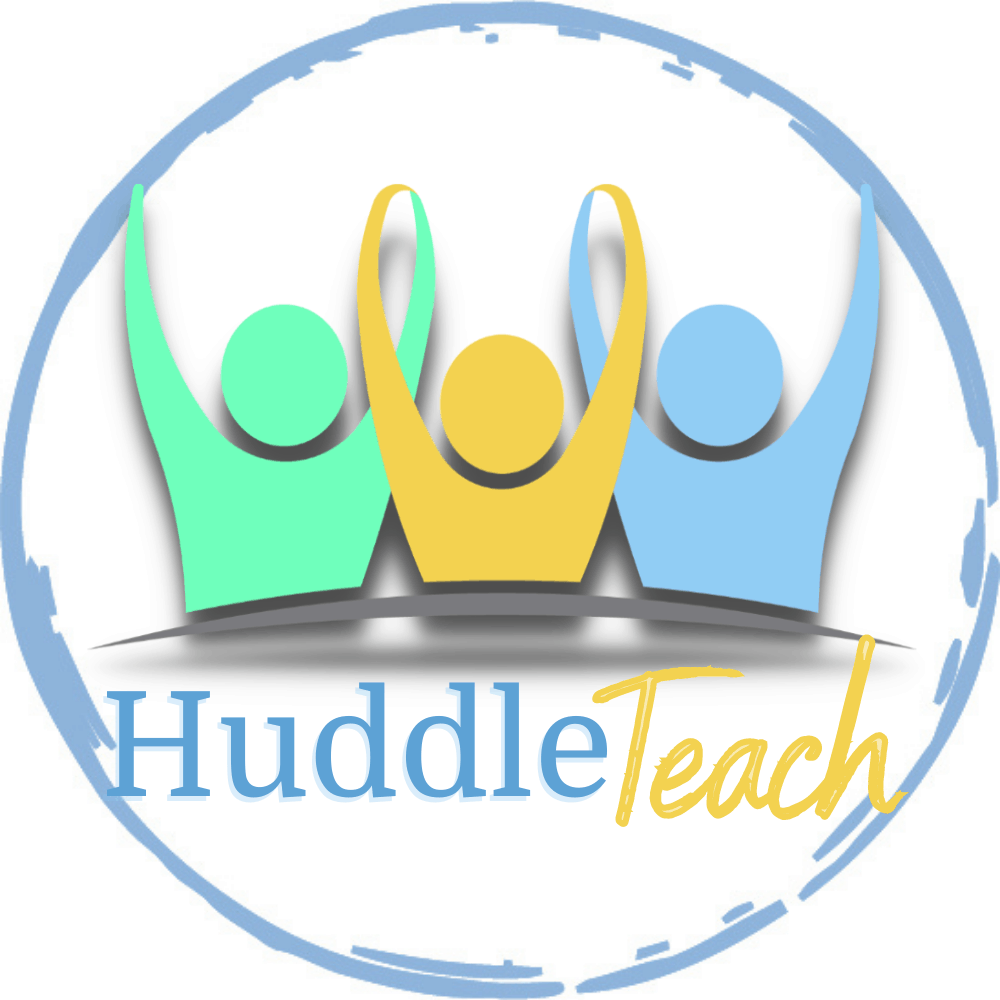5 easy steps to move students beyond graphic organizers
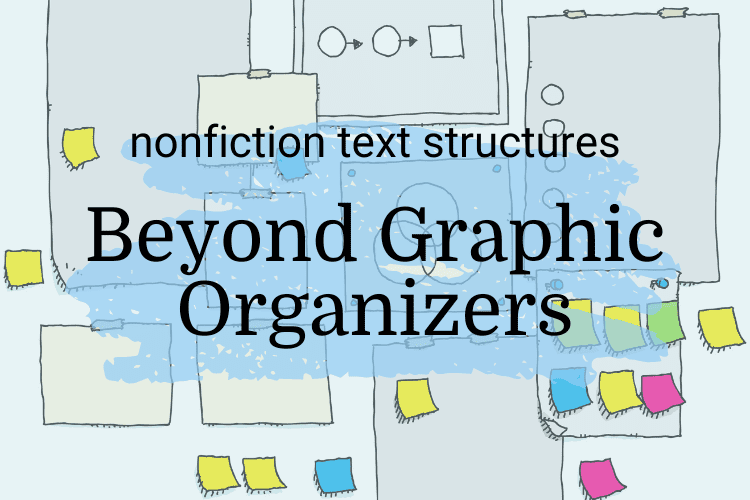
But first…
If you read our last blog post about nonfiction text structures, you already know where to begin – teaching and practicing the identification of each structure separately.
As a reminder, we separate them into seven components:
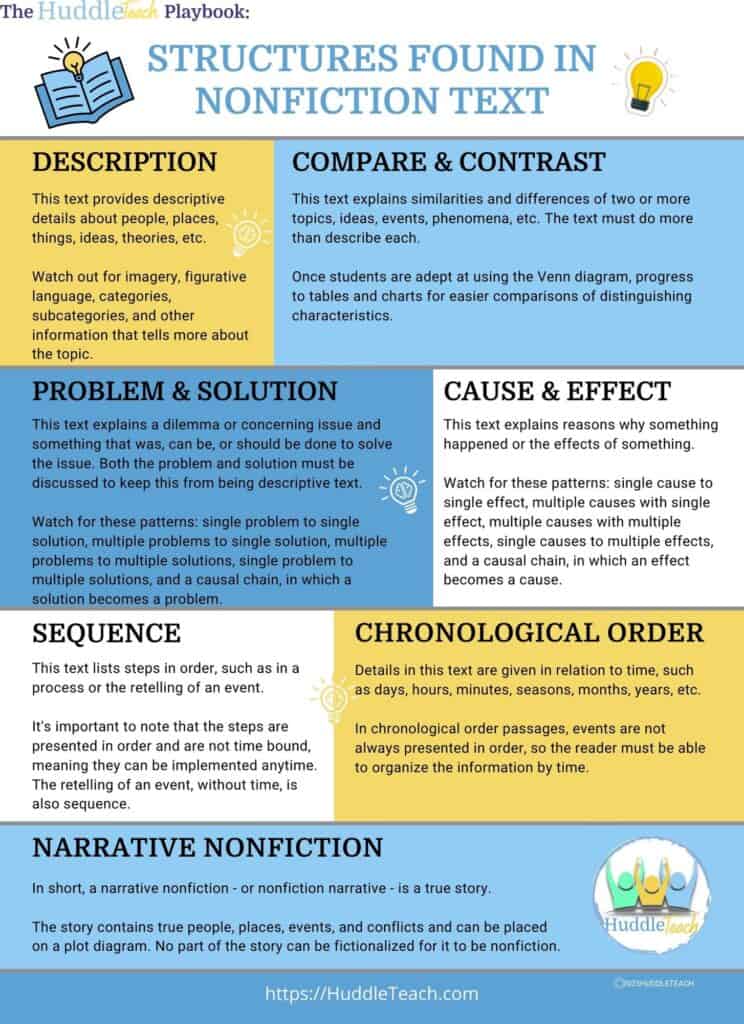
Download this and all pages from this post in the Freebie Library. Subscribe to the newsletter to receive the current password.
As a matter of fact, we teach the individual structures in the order on that page, discussing how those next to each other are “cousins” and often confused. We also add narrative nonfiction as we know our older readers often have a difficult time placing true stories. Finally, we separate chronological order from sequence because we want our readers to know they will need to process the information differently.
If we want students to transfer this knowledge to authentic text, we cannot continue practicing individual structures and graphic organizers.
Terri @HuddleTeach
But once students have an understanding of the basic text structures, it’s time to move them forward into combined structures within authentic text.
Steps to teach nonfiction structures in authentic texts
Step 1: Use verbs that match the structure
Move from the noun version of the structure (e.g., compare/contrast) to action. When students can see the actions the author is taking, they will better understand the connection between purpose and structure. Here ae some examples:
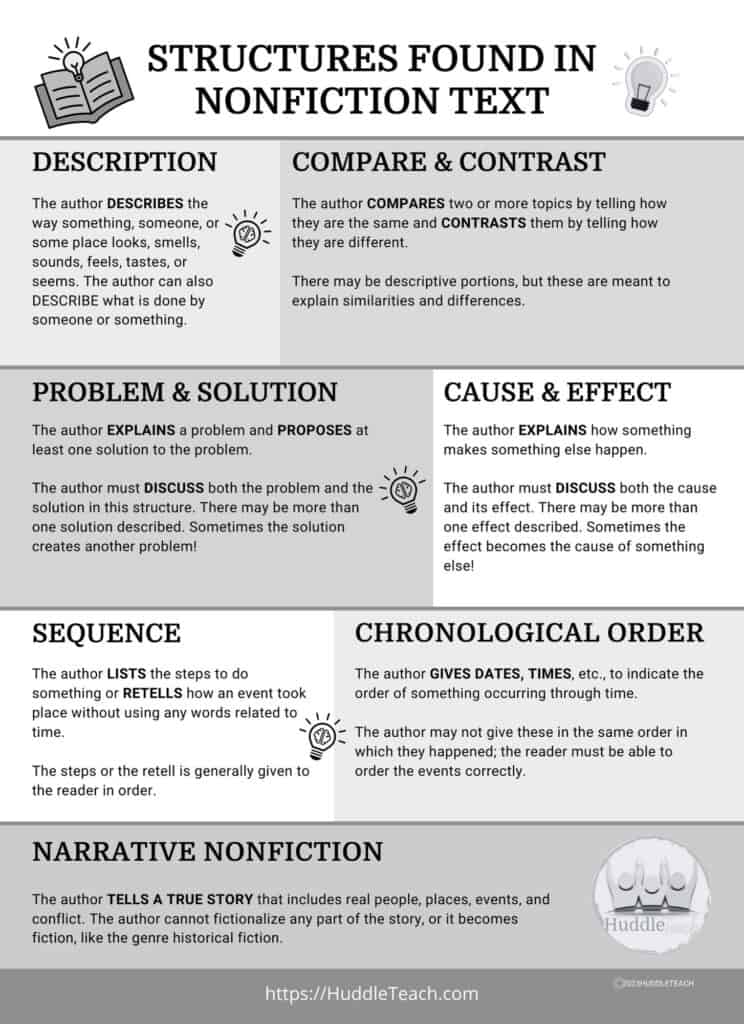
Download this and all pages from this post in the Freebie Library. Subscribe to the newsletter to receive the current password.
Step 2: Use texts that incorporate more than one structure
Choose authentic texts that contain more than one structure. See the page at the bottom of this post with links to text sites.
Make a copy of the text and work through it before you lead students through the process. You’ll be grateful you did!
Step 3: Model thinking about what the author is doing within the text, such as in this example:
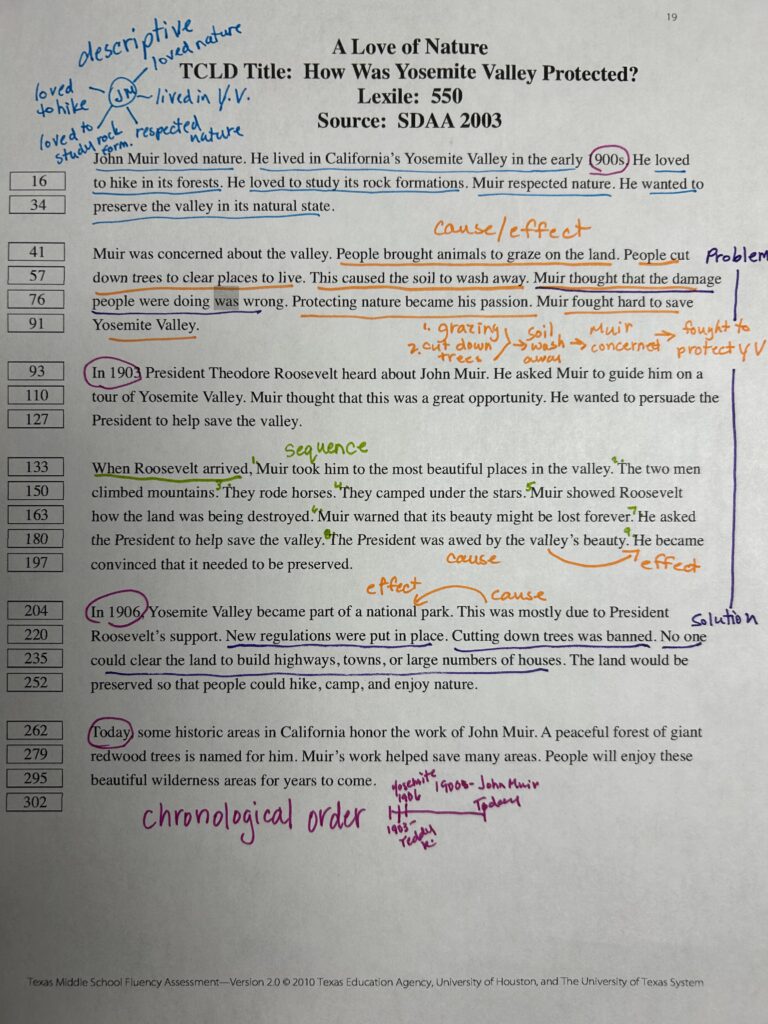
Texas Middle School Fluency Assessment, (C)2010 Texas Education Agency, University of Houston, and The University of Texas System
Step 4: Complete the instructional cycle
Gradually release responsibility to students to identify many structures within the text using the I DO (modeling), WE DO (shared reading and annotating), Y’ALL DO (group or pairs work through text together), and YOU DO (independent work). This is not always a linear process and may take many experiences for students to master.
Step 5: Incorporate writing activities that summarize and identify the structure
After reading, the students can paraphrase in way that explains the text structures, such as, “In the second paragraph, the author explained the similarities and differences…”
Where to find texts for teaching nonfiction text structures
You can find texts that contain more than one structure in your content area textbooks or on one of these (mostly) free text sites:
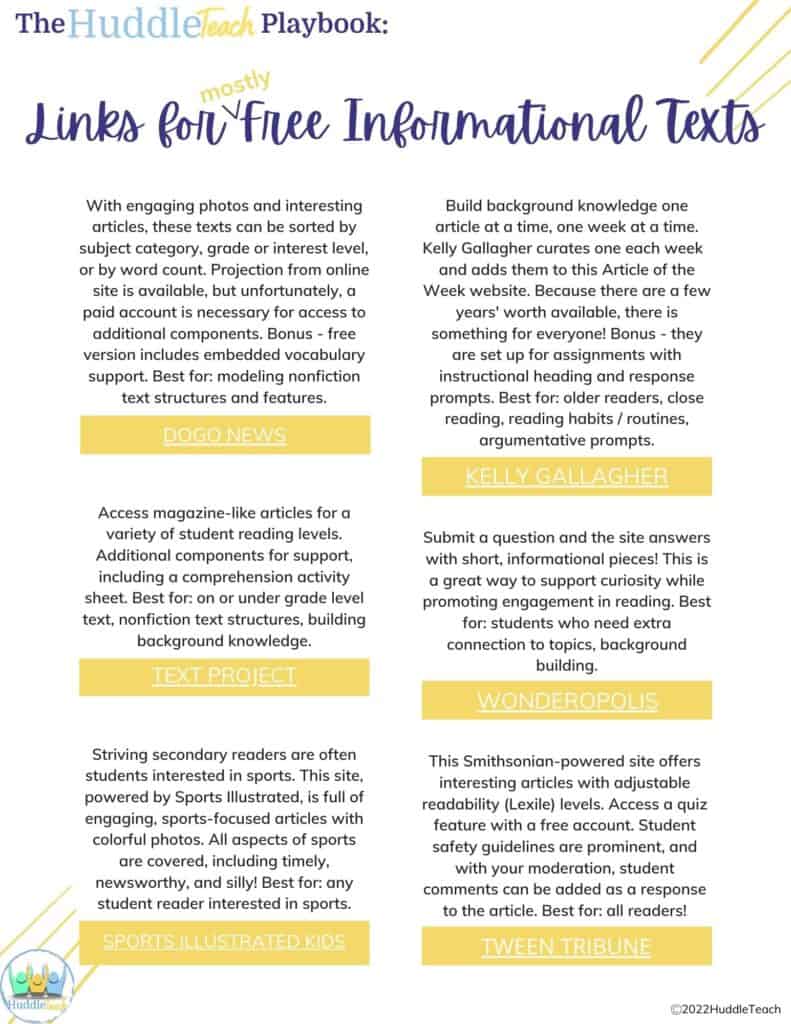
Download this and all pages from this post in the Freebie Library. Subscribe to the newsletter to receive the current password.
How do you support understanding of nonfiction text structures?

